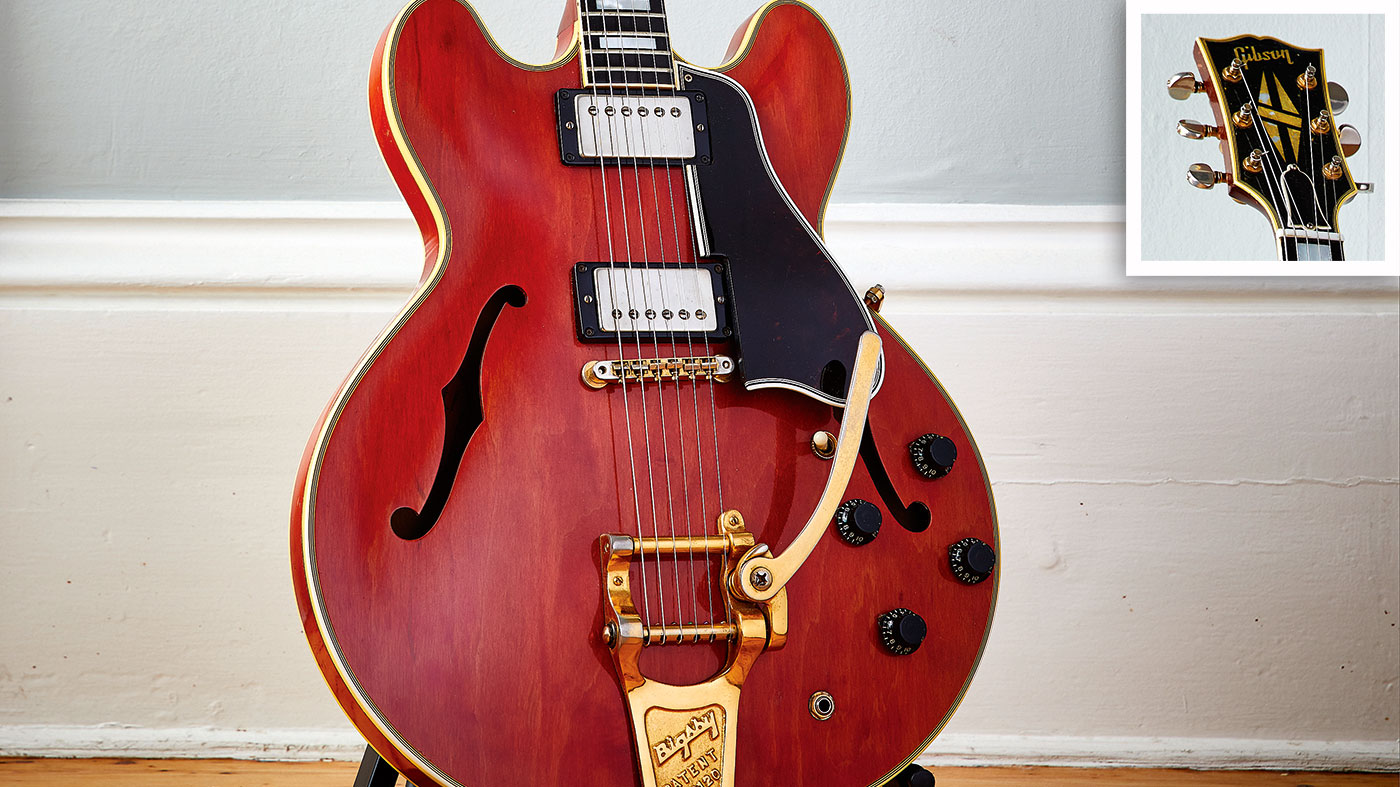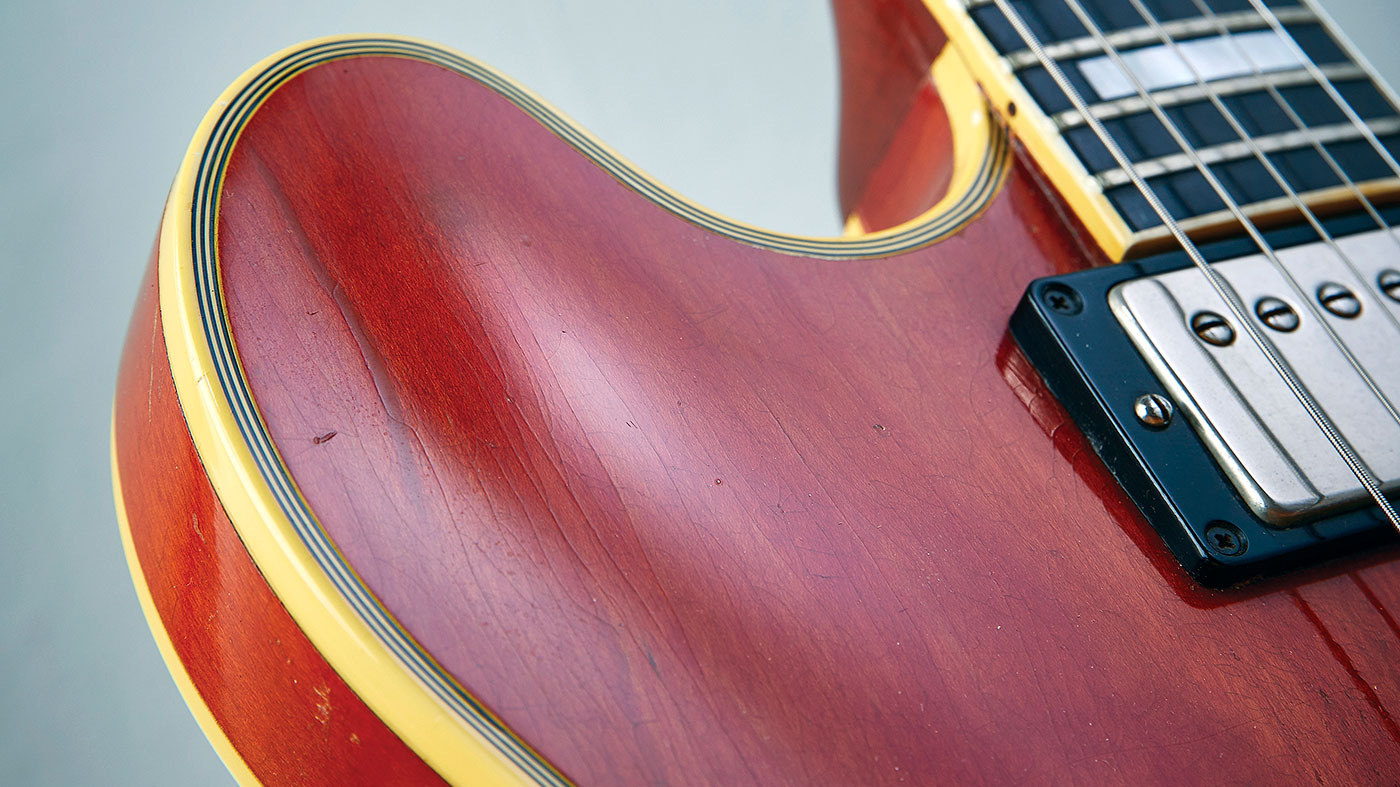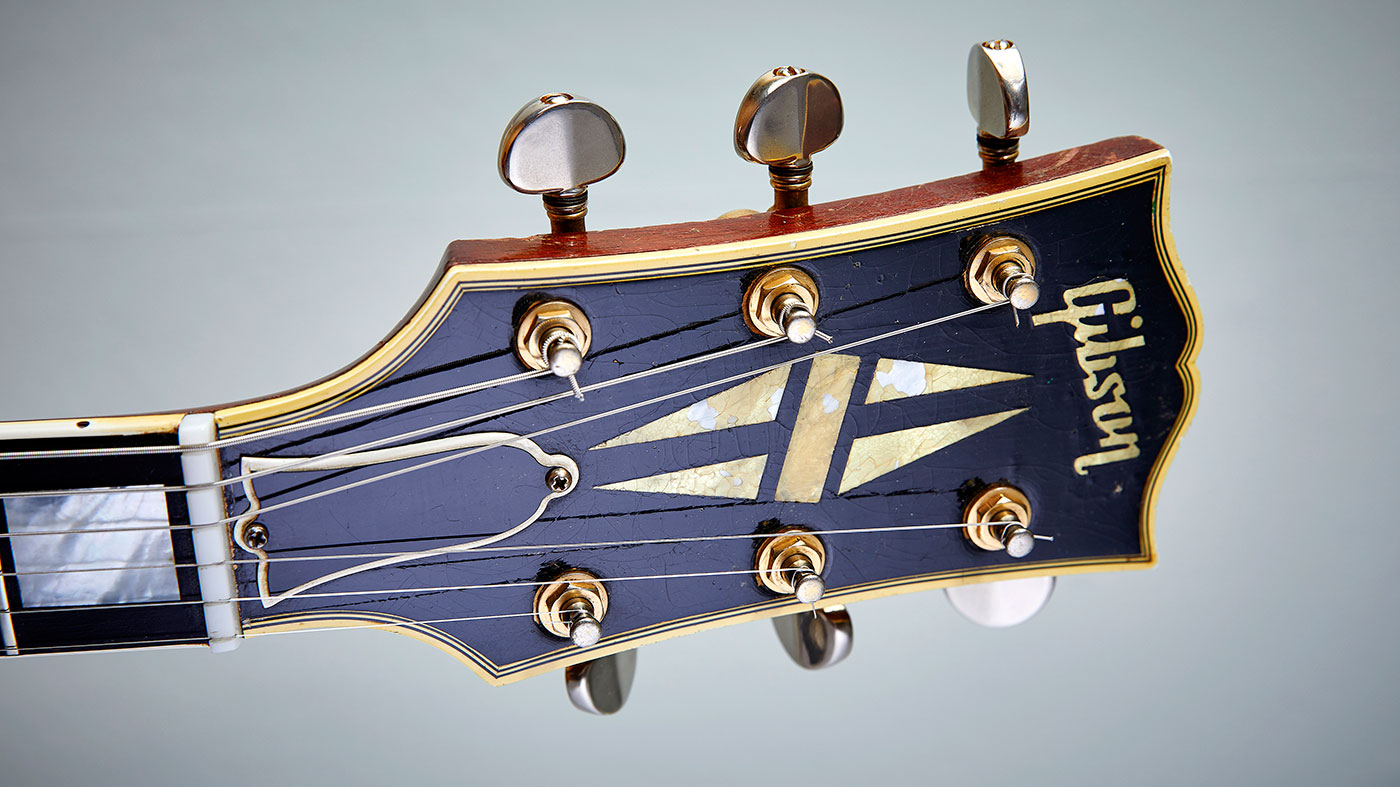Classic gear: Gibson ES-355TD
Gibson’s iconic cherry red finish goes into full-scale production with the ES-355

Gibson introduced their new top-of-the-range 300-series Electric Spanish model 355 Thinline Double-cutaway semi-hollowbody electric archtop guitar in 1958.
As per the flagship models in their solidbody electric and electric hollowbody lines (the Les Paul Custom and Super 400CES, respectively), the ES-355TD/SV can be recognised by its five-piece split diamond headstock inlays. In addition, it can be clearly differentiated alongside its double f-hole, centre blockequipped siblings - the ES-335TD and ES-345TD guitars - by its large block fretboard inlays (the 335 may be identified by either dots or - from 1962 onwards - small blocks, while the 345 boasts double parallelogram fretboard inlays).
Gibson didn’t hold back on its design for the ES-355, embellishing it with the hallmarks of its most upmarket guitars
The 335, 345 and 355 share identical body dimensions (16 inches wide and 15/8-inches deep) and are constructed using arched laminated maple and a glued-in-one-piece mahogany neck with a 24¾-inch scale length joining at the 19th fret - the only notable difference in tonewood being the 355’s ebony fingerboard in place of rosewood. All three guitars are fitted with dual humbuckers recessed into a feedback-hindering maple centre block, a three-way pickup selector switch and separate pickup volume and tone controls. However, as per the 345, the 355 may also come furnished with a Varitone switch, including stereo output (in which case an ‘SV’, or Stereo Varitone, is added to the end of the model name, thus ES-355TDSV).
Gibson didn’t hold back on its design for the ES-355, embellishing it with the hallmarks of its most upmarket guitars.
Sporting gold-plated hardware, along with multiple-ply body, headstock and pickguard binding, 355s were also fitted with a Bigsby or sideways vibrato system (with the rare exception of stop tailpiece equipped examples). Prior to its release, the factory had been experimenting with a cherry-red finish, and the 355 was the first of the Electric Spanish guitars to receive the new paint job as standard, as opposed to sunburst or natural finishes.
Despite its prestige, the 355s popularity was surpassed by its more austere, minimal and straightforward relative, the 335
Adorned in Gibson’s new Sunday best, the flamboyant 355 seemed like a surefire winner after being cherry-picked by electric blues legends B.B. King (who christened his ‘Lucille’) and Chuck Berry, as an instrument of choice, while it also found favour with Keith Richards and, later, Noel Gallagher. However, despite its prestige, the 355s popularity was surpassed by its more austere, minimal and straightforward relative, the 335. Aside from enabling a more simplified approach to playing, the 335s lighter weight, sans vibrato and hefty Varitone circuitry, coupled with a sustainfriendly stop tailpiece made them more desirable. Thus, the down-spec (albeit rarer) 355s tend to be more sought after.
Gibson eventually ceased regular 355 production in 1982, although by this stage the company had already began offering the excellent 355-derived B.B. King Lucille models as an alternative. Since then, 355s have appeared in several forms including as the Alex Lifeson ES-355 VOS along with various reissues. This year’s range includes the ES-355 VOS Bigsby, the ES-355 Walnut Maestro and the ES-355 Black Beauty.
Get the MusicRadar Newsletter
Want all the hottest music and gear news, reviews, deals, features and more, direct to your inbox? Sign up here.

1959 Gibson ES-355TD
1. Serial number
‘A’ prefixed five-digit number on orange oval label in bass f-hole
2. Headstock
Five-piece split-diamond inlays; modernised Gibson logo with dot of ‘i’ free from ‘G’ and open ‘b’ and ‘o’; multiple ply binding; black nitrocellulose finish on face
3. Plastics
Black and white ‘bell’ truss rod cover; four black flared knobs; long (extends below bridge) multiple bound tortoiseshell cellulose pickguard; black pickup surrounds; white switch tip
4. Hardware
Grover Rotomatic tuners; gold-plated Bigsby tailpiece, adjustable ABR-1 bridge, selector switch ring, frontloading input jack, pickguard arm and screws
5. Pickups
Dual PAF humbuckers (identified by sticker on bottom reading “Patent Applied For”); mono circuitry; three-way selector switch; two volume and two tone pots; two ‘bumblebee’ tone capacitors
6. Body
16” wide and 1 5/8” deep; pressed arched laminated maple with maple centre block; rounded ‘Mickey Mouse ears’ double-cutaway; double f-holes; cherry red nitrocellulose finish; multiple ply bound top and triple bound back
7. Neck
One-piece mahogany, joining body at 19th fret; 24¾” scale length; chunky neck profile with wide 1 11/16” nut; singlebound ebony fretboard with large block inlays; nitrocellulose finish

The evolution of the Gibson ES-355
- 1958 Mono ES-355TD introduced with Bigsby or sideways vibrato in cherry red
- 1959 Stereo ES-355TDSV with Varitone switch introduced
- 1960 Thinner ‘blade’ neck profile; sunburst and natural finishes available
- 1961 Shorter pickguard now standard; sideways vibrato standard
- 1962 “Patent No 2,737,842” humbuckers begin to replace PAF type
- 1963 Gibson lyre graphic appears on vibrato cover plate
- 1965 1 11/16 inch nut width decreases to 1 9/16 - 1 5/8" as standard; C-profile neck
- 1967 Grover tuners begin to replace Kluson model machine heads
- 1969 Walnut finish available; Bigsby vibrato optional
- 1970 ES-355TD discontinued
- 1982 ES-355TDSV discontinued
Rod Brakes is a music journalist with an expertise in guitars. Having spent many years at the coalface as a guitar dealer and tech, Rod's more recent work as a writer covering artists, industry pros and gear includes contributions for leading publications and websites such as Guitarist, Total Guitar, Guitar World, Guitar Player and MusicRadar in addition to specialist music books, blogs and social media. He is also a lifelong musician.
“Its mission is simple: unleash the power of any amplifier or line-level source without compromise”: Two Notes promises a “watershed” in tube amp control with the Torpedo Reload II
MusicRadar deals of the week: Enjoy a mind-blowing $600 off a full-fat Gibson Les Paul, £500 off Kirk Hammett's Epiphone Greeny, and so much more












